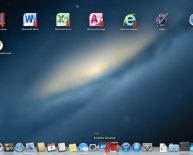
Multimedia Information Technology
Multimedia technology applies interactive computer elements, such as graphics, text, video, sound, and animation, to deliver a message. If you have a knack for computer work and are interested in digital media, read on to discover career and education opportunities available in this growing specialty. Schools offering .
Multimedia technology refers to interactive, computer-based applications that allow people to communicate ideas and information with digital and print elements. Professionals in the field use computer software to develop and manage online graphics and content. The work that media technology specialists produce is used in various media, such as training programs, web pages, and news sites.
Important Facts About Multimedia Technology
| Median Salary (2014) | $63, 630 (multimedia artists and animators) |
| Key Skills | Time management; organization; problem-solving; communication |
| Similar Occupations | Art directors; graphic designers; web developers |
| Job Outlook | 6% (for multimedia artists and animators) |
Source: U.S. Bureau of Labor Statistics
Career Opportunities
There are a many employment opportunities for multimedia technology professionals in a variety of industries. Anything that needs to be communicated to an audience can contain digital and print images, text, or animation to attract attention and deliver the message. You might find a position in marketing or advertising. You may be employed in publishing and be responsible for managing, designing, or producing multimedia content for websites, newspapers, and magazines. Possible career choices include:
- Graphic artist
- Digital photographer
- Instructional designer
- Production assistant
- Desktop publisher
Education
In multimedia associate's and bachelor's degree programs, you can expect to learn how to use computer programs and create interactive presentations or materials. You may be trained to use website development software like Cascading Style Sheet or the Adobe Creative Suite, which includes Photoshop, Flash, Illustrator, and Dreamweaver. You may also learn design techniques using multimedia technology and be encouraged to develop your own creative style and make personal works of digital art. The program typically culminates in a portfolio class, which allows you to design a portfolio for potential employers. Multimedia technology courses typically include:
- Interactive media
- Website design fundamentals
- Electronic imaging
- Introductory photography
- Animation
- Multimedia programming
- Graphic design

















